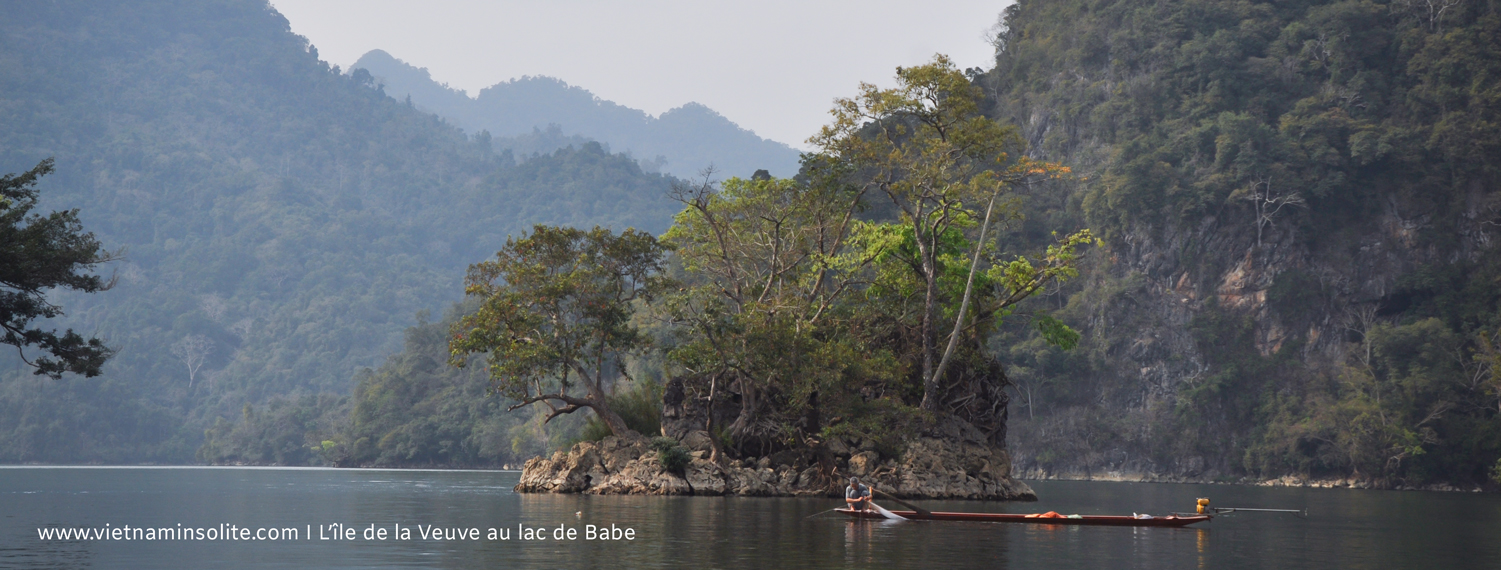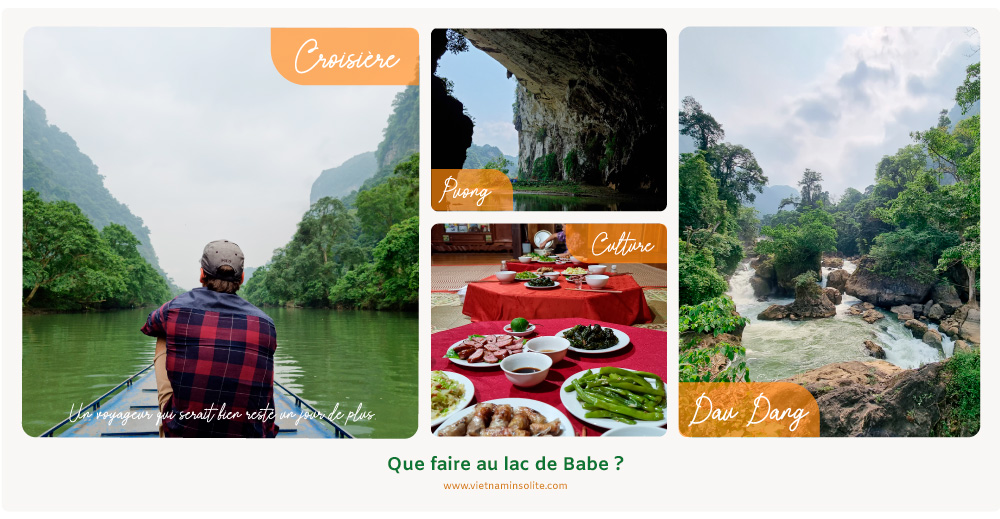
Explore Ba Be Lake: Mysterious And Captivating Beauty Of Northern Vietnam
The Ba Be Lake is an ecotourism destination in northern Vietnam that is still relatively unknown to foreigners, but it is a hidden gem. This natural park invites visitors to embrace greenery, tranquility, and beauty... everything except stress. Hiking in the great outdoors, cycling, canoeing, and boating are all great ways to connect with one of the country's most fascinating natural landscapes.
In this article, you will uncover the mystery of Ba Be Lake and explore the various activities and sites to discover there. Finally, you will find the logistical information you need to make the most of your trip.
A legendary lake
In the past, the villagers of Nam Mâu used to organize a spiritual festival dedicated to Buddha. Dressed in their finest ceremonial clothes, the locals would go to the temple to burn incense in hopes of receiving good luck. One day, during the festival, an unknown woman passed through the village, calling on the goodwill of the villagers to receive bread. Scared, the villagers chased her away. A widow from the village, moved by the scene, decided to take in the elderly woman and offer her shelter and food.
When midnight struck, the widow and her son looked at the elderly woman's bed, but instead, they saw a giant water dragon. Paralyzed with fear, they stayed frozen in their bed until dawn. To their surprise, the water dragon turned back into the frail woman who had been so hungry. Before leaving, the woman told her hosts, still shaken: “This area is about to be flooded, take care.” She left, while the widow and her son placed ashes from the stove around the house. The next night, a column of water hit the village, destroying everything in its path. Terrified, the villagers fled, including the widow and her son. After the disaster, only one house remained: the widow’s island.

What to do at Ba Be lake?
Let’s be honest, if you're hoping to see the water dragon, it hasn’t been spotted in decades. However, Ba Be offers a variety of refreshing nature activities: boating, canoeing, hiking, cycling... or simply relaxing on the terrace of your homestay.

Cruise on Ba Be lake
The main activity at Ba Be Lake is to take a trip on one of the many boats operated by local villagers, which can last anywhere from half a day to a full day. This boat ride will allow you to discover many of the lake's natural and cultural sites, starting with the famous Widow's Island, as well as the Puong and Mua Ma Caves, the Fairy Pond, Dau Dang Waterfall, and the Dan Ma Temple. Between stops, don't forget to take a refreshing dip. If you'd like to be more actively involved in your adventure, you can also rent a canoe for the day!
Hiking at Babe lake
It is very possible to explore Ba Be on foot or by bike (many homestays offer bicycles for guests). The advantage of hiking is that the trails wind through the region's lush rice paddies, from village to village, with a bit of climbing and opportunities for interaction with the locals. The hike can easily take a full day, anywhere from 5 to 7 hours of walking for the longer routes. Having a multilingual guide for a walking expedition is highly recommended!
Culinary Specialties
If you choose to stay in a homestay, you'll enjoy typical Vietnamese dishes: spring rolls, vegetable broths, fried rice, stir-fried vegetables, and perfectly seasoned meat or fish. On your table, you'll likely find fried small fish, pieces of smoked sausage, bamboo shoots stuffed with meat (quite strong in flavor), and sautéed snails with lemongrass—local specialties of the area.
Practical Information About Ba Be lake
Babe national park
Ba Be Lake is a natural freshwater lake located in the Bac Kan Province of northeastern Vietnam, formed millions of years ago (around 200 million years). It ranks among the 100 largest lakes in the world, covering an area of 5 km². The three branches of the lake (Ba: three) are interconnected: Pe Lam, Pe Lu, and Pe Leng. This site is home to no less than 600 species of trees and 400 species of animals.
How to get to Ba Be lake?
You have four options for reaching the lake from Hanoi (220 km - 3 to 5 hours by road): by car, motorbike, local bus (Hanoi-Ba Be), or a private car with a driver. If you plan to go by car or motorbike, you'll need to present an international driving license. For the local bus, there are several options (day and night routes) with specific details depending on the chosen route. Our team is available to explain the options to you. A private car with a driver is a more comfortable but also more expensive option.
When to visit Ba Be lake?
The best time to visit Ba Be Lake is during the dry season, from February to April. Temperatures range from 25 to 30 degrees, with light refreshing winds and dry air. If you visit between April and October, expect surprise rain showers typical of the rainy season. Lastly, from November to February, during winter, temperatures can drop as low as 0°C! Note that despite the low temperatures, on January 9th and 10th, the local ethnic groups (Tay, Dao, and H’mong) organize their own festivals. So, if you're there during these dates, don't miss it!
Where to stay at Ba Be lake?
You can stay in a hotel or with a local family! It all depends on your accommodation preferences. We personally recommend the homestays around Ba Be Lake, as they are very comfortable. Plus, sharing a delicious meal with your hosts is priceless!
What do you think?
In short, Ba Be Lake offers many advantages, especially if you're seeking peace and tranquility (the contrast with Hanoi is quite striking). To fully appreciate the area, we recommend staying at least one night on-site. Some guests even ask to stay an extra day, for example:
Short Itinerary
- Day 1: Arrive in the morning, hike or canoe, dinner, and overnight at a homestay
- Day 2: Morning cruise, lunch at a homestay, depart for another destination
Long Itinerary
- Day 1: Arrive in the morning, hike or canoe, dinner, and overnight at a homestay
- Day 2: Full day on the water, lunch at a local restaurant, dinner, and overnight at a homestay
- Day 3: Depart for another destination
We hope this article has helped clarify your itinerary. If you have any questions, feel free to contact our team—it's possible we know the area quite well: contact@vietnaminsolite.com .
If you have any questions or would like us to organize your trip, please contact Vietnam Insolite !
Leave a comment and let’s chat :)






